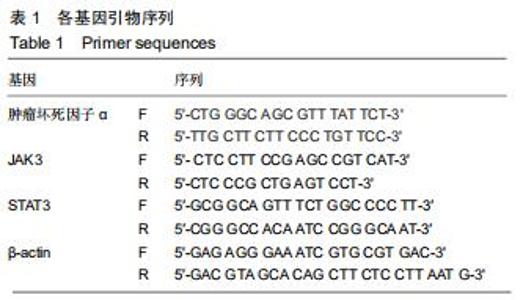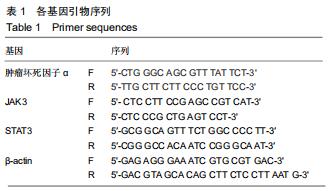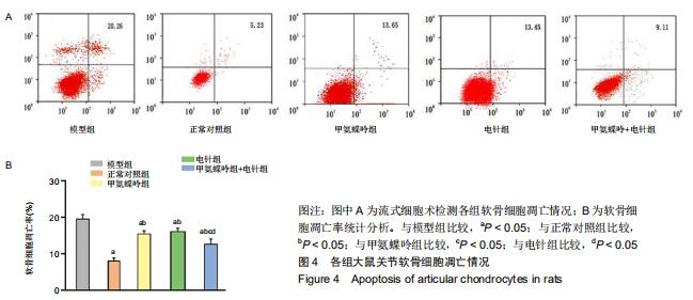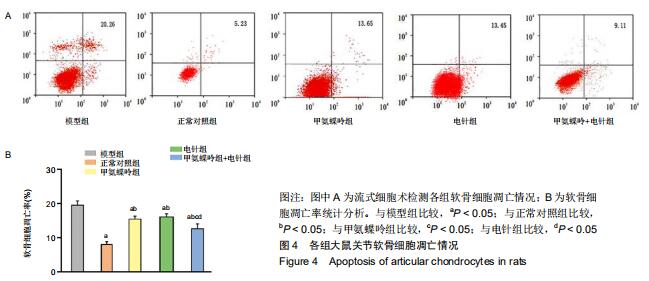|
[1] LIU XZ, GAO Y, ZHU CH, et al. Effect of Dishevelled 2 on apoptosis in rheumatoid arthritis fibroblast-like synoviocytes through inhibiting JAK-STAT pathway. Zhonghua Yi Xue Za Zhi. 2018;98(15):1189-1193.
[2] LIMA A, BERNARDES M, AZEVEDO R, et al. Pharmacogenomics of Methotrexate Membrane Transport Pathway: Can Clinical Response to Methotrexate in Rheumatoid Arthritis Be Predicted? Int J Mol Sci. 2015;16(6): 13760-13780.
[3] PARK JK, CHOI Y, WINTHROP KL, et al. Optimal time between the last methotrexate administration and seasonal influenza vaccination in rheumatoid arthritis: post hoc analysis of a randomised clinical trial. Ann Rheum Dis. 2019;78(9): 1283-1284.
[4] LU L, ZHU J, ZHENG Z, et al. Jak-STAT pathway is involved in the induction of TNF-beta gene during stimulation by IL-2. Eur J Immunol. 1998;28(3):805-810.
[5] KIM H, JEONG H, LEE J, et al. AB0091 Hypoxia Induce Slug Expression via JAK/STAT3 Pathway in Rheumatoid Arthritis Fibroblast-like Synoviocytes. Annals of the Rheumatic Diseases. 2016; 75(2):928.1-928.
[6] THOMAS S, FISHER K, SNOWDEN J, et al. Effect of methotrexate on JAK/STAT pathway activation in myeloproliferative neoplasms. Lancet. 2015;385 Suppl 1:S98.
[7] LI HX, ZHAO W, SHI Y, et al. Retinoic acid amide inhibits JAK/STAT pathway in lung cancer which leads to apoptosis. Tumour Biol. 2015;36(11):8671-8678.
[8] MALEMUD CJ. The role of the JAK/STAT signal pathway in rheumatoid arthritis. Ther Adv Musculoskelet Dis. 2018; 10(5-6):117-127.
[9] 崔毅佳,王淑梅,金志国.甲氨蝶呤通过抑制TLR2-NF-κB信号通路减轻类风湿关节炎大鼠滑膜炎的作用研究[J].新疆医科大学学报, 2019,42(2):77-82.
[10] 王晔.电针联合扶正祛邪方治疗类风湿关节炎疗效及对TNF-α、SIL-2R、CRP的影响[J].现代中西医结合杂志, 2019,28(7): 724-727.
[11] 高燕萍,魏荣锐,吴强,等.无尾果醇提物对类风湿性关节炎大鼠的影响[J].中成药, 2019,41(3):190-193.
[12] CHOE JY, PARK KY, PARK SH, et al. Regulatory effect of calcineurin inhibitor, tacrolimus, on IL-6/sIL-6R-mediated RANKL expression through JAK2-STAT3-SOCS3 signaling pathway in fibroblast-like synoviocytes. Arthritis Res Ther. 2013;15(1):R26.
[13] ZHAI Y, WU B, LI J, et al. CD147 promotes IKK/IκB/NF-κB pathway to resist TNF-induced apoptosis in rheumatoid arthritis synovial fibroblasts. J Mol Med (Berl). 2016;94(1): 71-82.
[14] ZHANG XF, XIANG SY, GENG WY, et al. Electro-acupuncture regulates the cholinergic anti-inflammatory pathway in a rat model of chronic obstructive pulmonary disease. J Integr Med. 2018;16(6):418-426.
[15] TANAKA Y, EMOTO K, TSUJIMOTO M, et al. THU0149 Efficacy and Safety of Baricitinib in Japanese Rheumatoid Arthritis Patients at 12 Weeks. Annals of the Rheumatic Diseases. 2014;73(2):231.
[16] CHEN H, SHAO X, LI L, et al. Electroacupuncture serum inhibits TNF‑α‑mediated chondrocyte inflammation via the Ras‑Raf‑MEK1/2‑ERK1/2 signaling pathway. Mol Med Rep. 2017;16(5):5807-5814.
[17] BOYLE DL, SOMA K, HODGE J, et al. The JAK inhibitor tofacitinib suppresses synovial JAK1-STAT signalling in rheumatoid arthritis. Ann Rheum Dis. 2015;74(6):1311-1316.
[18] TANAKA Y. Recent progress and perspective in JAK inhibitors for rheumatoid arthritis: from bench to bedside. J Biochem. 2015;158(3):173-179.
[19] COFFEY G, BETZ A, GRAF J, et al. Methotrexate and a spleen tyrosine kinase inhibitor cooperate to inhibit responses to peripheral blood B cells in rheumatoid arthritis. Pharmacol Res Perspect. 2013;1(2):e00016.
[20] BLITS M, JANSEN G, ASSARAF YG, et al. Methotrexate normalizes up-regulated folate pathway genes in rheumatoid arthritis. Arthritis Rheum. 2013;65(11):2791-2802.
[21] SATOU A, BANNO S, HANAMURA I, et al. EBV-positive mucocutaneous ulcer arising in rheumatoid arthritis patients treated with methotrexate: Single center series of nine cases. Pathol Int. 2019;69(1):21-28.
|











